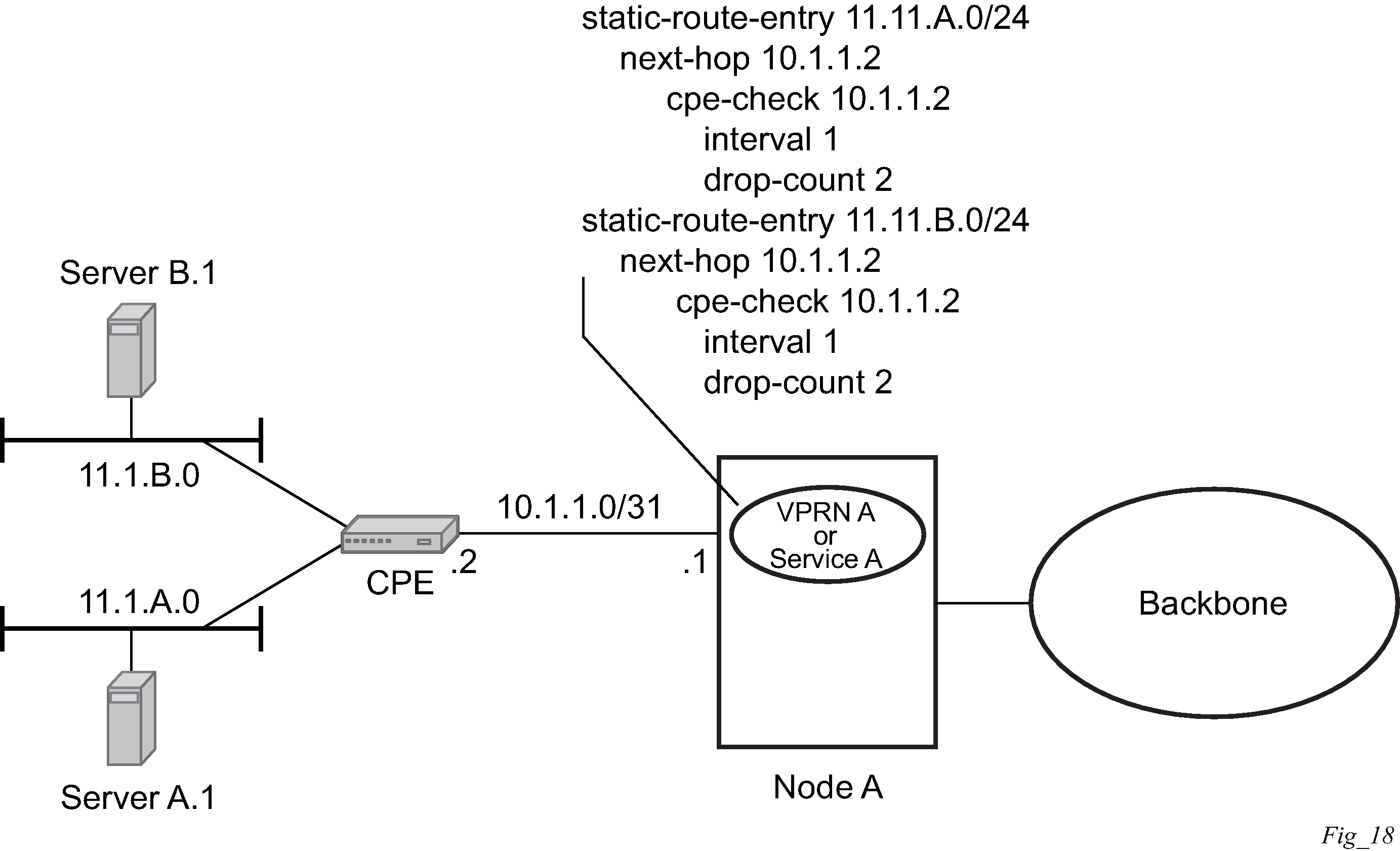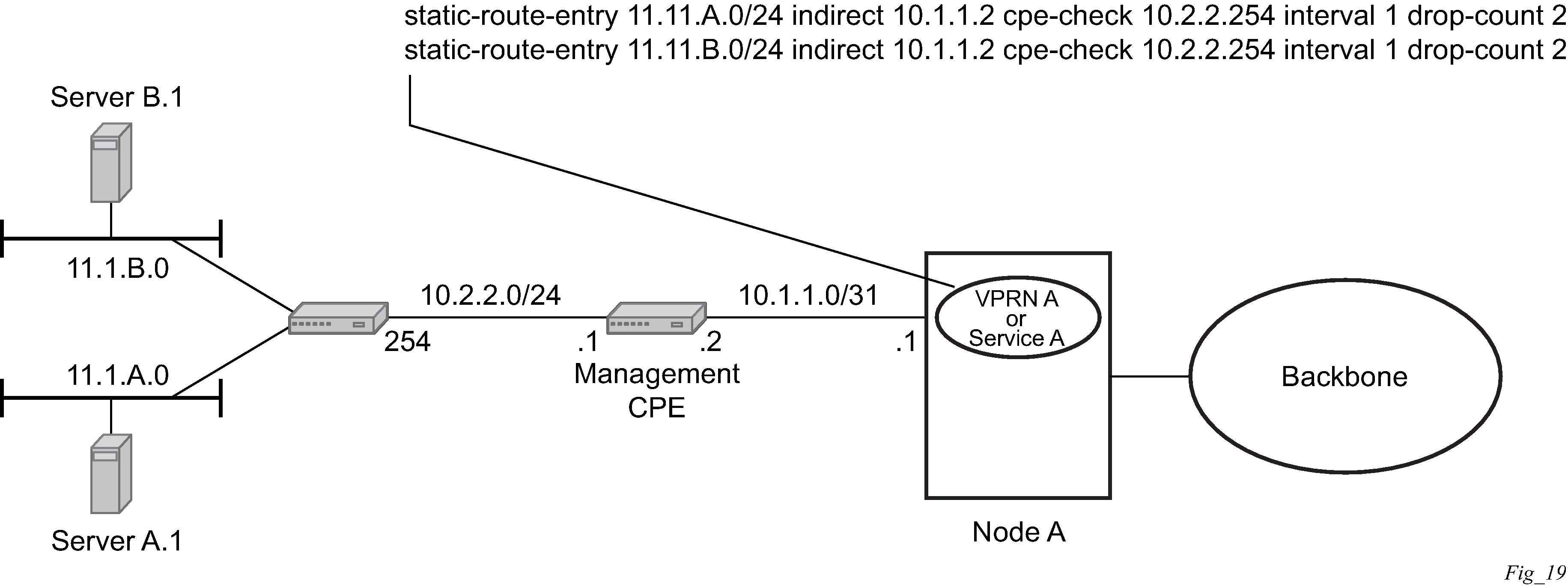Static routes are used within many IES services and VPRN services. Unlike dynamic routing protocols, there is no way to change the state of routes based on availability information for the associated CPE. CPE connectivity check adds flexibility so that unavailable destinations are removed from the VPRN routing tables dynamically and minimize wasted bandwidth. Figure: Directly connected IP target shows a setup with a directly connected IP target and Figure: Multiple hops to IP target shows a setup with multiple hops to an IP target.


The availability of the far-end static route is monitored through periodic polling. The polling period is configured. If the poll fails a specified number of sequential polls, the static route is marked as inactive.
Either ICMP ping or unicast ARP mechanism can be used to test the connectivity. ICMP ping is preferred.
If the connectivity check fails and the static route is deactivated, the router continues to send polls and re-activate any routes that are restored.